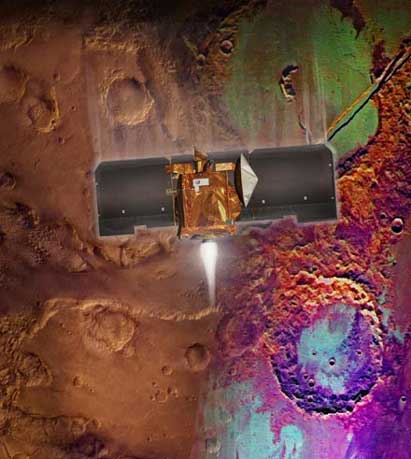The red planet returns to the red planet.

The
Mars Odyssey probe enters the orbit of Mars Wednesday at dawn. Thus, the first part of the journey that began half a year ago will be completed. The trip began on April 7 in Cape Canaveral, Florida. Thus, the Mars Odyssey probe has traveled 644 million kilometers.
The probe will remain in the orbit of Mars and work there, it will not go down to the ground of the red planet. Mars Odyssey, thanks to its instruments, will be able to study the soil of Mars, find water and conduct studies of the Martian atmosphere to learn how it can affect human health.
One of Mars Odyssey's goals is to decide whether or not there was life on Mars. For there to be life, liquid water is essential. The probe to be placed in the orbit of Mars is equipped to locate the water that may be in the subsoil of Mars. Among the tasks of the Mars Odissey probe, the study of the climate also has its importance. As is known, today Mars is too cold to have water on the surface. However, researchers believe that in the subsoil of Mars there can be water, so the ice that can be on Mars will be analyzed according to the seasons of the year. Mars Odissey will also conduct geological studies investigating chemical and mineral elements. Finally, collecting the characteristics of the atmosphere, another objective of the probe is to investigate in the coming years to bring man to the red planet. In addition, Mars Odyssey will bridge the gap with probe communication systems that want to be sent to the ground of Mars in the years 2003-2004.
Buletina
Bidali zure helbide elektronikoa eta jaso asteroko buletina zure sarrera-ontzian











